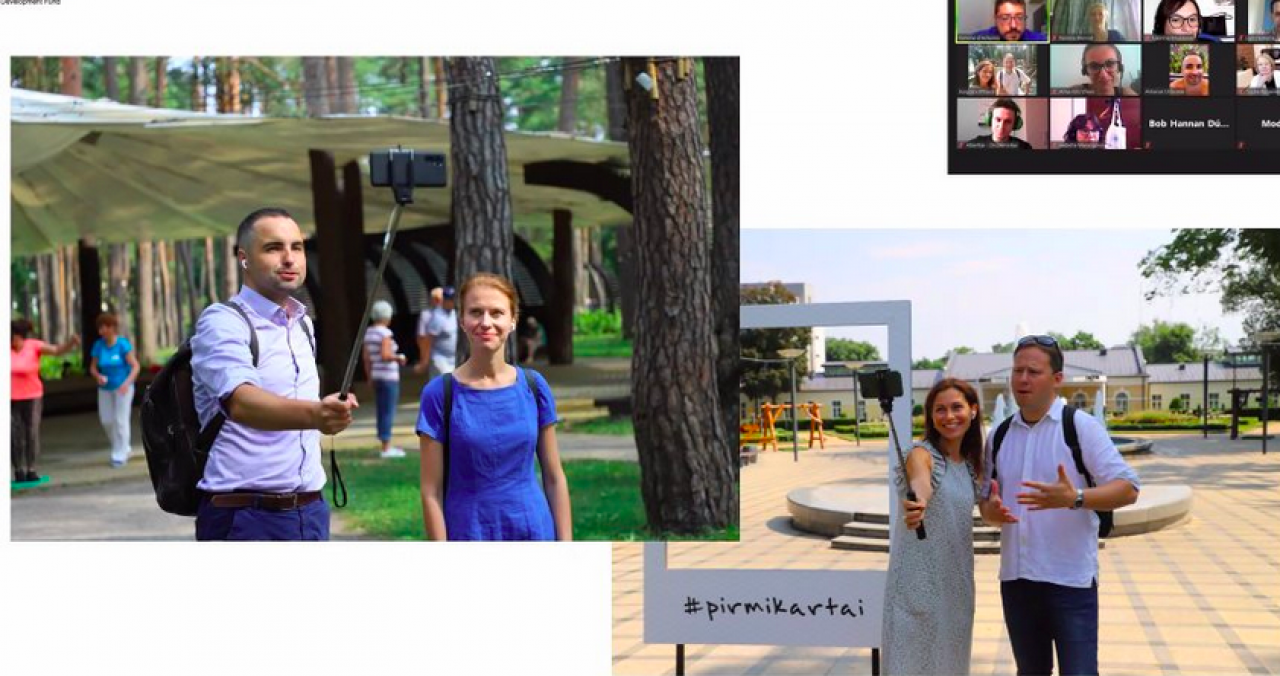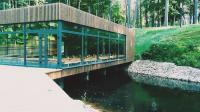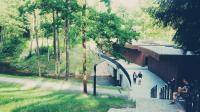
The online Transnational Meeting held on 14 and 15 July 2021 had a focus on the environmental dimension of tourism, one of the main layers of Tourism Friendly Cities. The case of Druskininkai and the analysis of the local strategies carried out by the partners on the topic provided a clear picture of the main issues related to make tourism less impactful on environment in European cities.
Tourism is responsible for 8% of global CO2 emissions annually and by 2030 it is estimated an increase of 25% in CO2 emissions compared to 2016. There is no doubt that the current situation of transition towards a comeback of tourism to pre-Covid levels is the best moment to prepare local authorities, the business community, residents and stakeholders to reduce the impact of tourism on the environment with innovative measures and long-term strategies.
The online Transnational Meeting of Tourism Friendly Cities dedicated to the environmental dimension implications for supporting a model of sustainable tourism was a key opportunity for opening the debate among the partners of the network on how to include a green dimension in the Integrated Action Plans and, more in general, in local tourism strategies keeping into account the attractiveness of the city but also the impact of tourism on public spaces, water resources and city services.
Global tourism institutions are strongly committed to making sustainability high on the agenda, supporting initiatives such as the UNWTO’s Global Tourism Plastics Initiative, which shows how addressing plastic waste and pollution within tourism can support the sustainable recovery of the sector. However, it is up to the cities to make tourism a decisive sector for contrasting climate change and promoting circular economy with concrete actions which may contribute to boost destinations’ visibility on a global scale and attract visitors who are always more sensitive towards these aspects and the environmental impact of tourism activities.
How to make tourism an enabler for green regeneration: the case of Druskininkai
The story of Druskininkai, the Lithuanian town partner of Tourism Friendly Cities which co-hosted the digital meeting, is a great example of how natural resources can be the crucial element for carrying on a process of urban regeneration focused on making the city a sustainable tourism destination.
Situated in the Southern part of Lithuania, around 120 kilometres from Vilnius, Druskininkai managed to drive an ecological transition from a Soviet-era resort town into a European-level spa and ski destination through preserving its heritage of local sources, rich in minerals and famous for its healing effects.
The sustainable rehabilitation of the natural resources which contributed to making Druskininkai famous for decades in the former USSR was the starting point for the creation of new structures, such as the AquaPark with its indoor swimming pools and wellness treatments, or the preservation of outdoor attractions such as the Dineika Wellness Park, a large park in the heart of a coniferous forest with a public sauna and gym equipment.

The long-term vision of the local authority was then embraced also by the local business sector, which started the rehabilitation of accommodation structures at the beginning of the 2000s and collaborated with the local government for promoting better public spaces and facilities for residents and tourists. This action led to stronger visibility of Druskininkai in the neighbouring countries, with a flow of tourists from Poland, Belarus and Russia that is expected to recover soon, and an integrated offer for wellbeing services and outdoor activities which is gradually evolving how the city’s experience is perceived by residents and visitors.
According to Alina Katunian, Head of the Tourism Department at Vilnius University of Applied Sciences, who was involved in the immersive digital city tour organized in the framework of the Tourism Friendly Cities’ Transnational Meeting, “a stronger symbiosis between people and nature is part of the success of Druskininkai as tourism destination”. Even though is still not clear how the behaviours of tourists towards nature and environment will change with the comeback of mass tourism, “monitoring the environmental aspects is crucial for local authorities in order to structure better policies in terms of the sustainable impact of tourism on the environment”, Ms.Katunian remarked.
![]()
However, making tourism less impactful on environment requires strong investments that local authorities are often unable to carry on with their budget. According to Modestas Vitkauskas, businessman and member of the city council, national incentives are fundamental to support businesses to be more environmental-friendly but need to be combined with efficient local strategies, such as waste recycling, in order to make tourism more sustainable along with the different parts of the supply chain.
Integrating the environmental dimension into long-term planning
As recalled by UNWTO in its One Planet Vision, there is a growing consensus among tourism stakeholders as to how the future resilience of tourism will depend on the sector’s ability to embrace a low carbon pathway and cut emissions by 50% by 2030. Global commitments, such as strengthening the measurement and disclosure of CO2 emissions in tourism, accelerating the decarbonisation of tourism operations and engaging the tourism sector in carbon removal, need to be combined to local actions in order to make cities, tourists and communities real drivers of the change.
The partners of Tourism-Friendly Cities share the ambition of being effective testing grounds for implementing plans and measures that can make tourism more environmentally sustainable at local level and influence the debate at regional and national level.

The group work on how the cities are keeping into account environmental aspects in medium and long-term planning strategies on tourism showed the diversity of strategies and actions that cities are carrying on. At the same time, it contributed to highlight some common elements, such as the necessity of fostering stronger mechanisms of collaboration within different departments or the connection between tourism and wider strategies such as the ones on urban resilience, as remarked by Genoa, which may be particularly impactful in scaling up the quality of the interventions to be carried out on city infrastructures and green spaces for residents and tourists.
Improving the urban quality also through the use of the financial resources of Green Deal and Recovery Plans for Europe can be beneficial for making cities greener and for making tourism less negatively impactful on urban environment, if well combined to strategies co-designed with business actors, residents and stakeholders. The inclusion of environmental and sustainability issues in the Integrated Action Plans that Tourism Friendly Cities’ partners are drafting in these months is a positive element for creating bridges among different policies and for implementing a green recovery of tourism in Europe after the Covid-19 emergency.
Article by Simone d’Antonio – Ad Hoc Expert for the URBACT Tourism-friendly cities Network
